What is ABA - Grade: A PDF

| Title | What is ABA - Grade: A |
|---|---|
| Author | Ambar Rodriguez |
| Course | Intro to ABA |
| Institution | Capella University |
| Pages | 5 |
| File Size | 105.9 KB |
| File Type | |
| Total Downloads | 89 |
| Total Views | 162 |
Summary
Essay...
Description
1
What is ABA?
What is ABA?
Ambar D. Rodriguez Capella University PSY7708 Professor Nicholas Orland January 24, 2021
2
What is ABA? What is ABA? Applied Behavior Analysis today uses seven dimensions that allow for studies to be evaluated and deemed Behavior Analytic or not. According to Baer, Wolf, and Risley (1968), the seven dimensions of Applied Behavior Analysis are; Applied, Behavioral, Analytic, Technological, Generality, and Effective. I will use these seven dimensions to evaluate the following two articles to decide which of them is behavior analytic and which piece is not. According to Cooper, Heron, and Heward (2020), the dimension of Applied means to select behaviors of social significances. The Dimension of Behavioral means the action chosen to be studied must be that behavior, not one similar to it (Cooper et al. 2020). The Analytic dimension states there must be functional relation between the events being changed and the targeted behavior (Cooper et al. 2020). The Technological dimension says that the method used should come across clear and that any reader can understand and replicate the study (Cooper et al. 2020). The Dimension of Conceptually Systematic says that the procedures used to change behavior must be relevant to the principles from which they come (Cooper et al. 2020). The Effective dimension states the behavior change must have clinical and social importance to the participant (Cooper et al. 2020). And the final dimension of Generality says that the behavioral change must maintain across different settings and with other people (Cooper et al. 2020).
Using Token Reinforcement to Increase Walking for Adults with Intellectual Disabilities (2016) Haley Krentz, Raymond Miltenberger, and Diego Valbuena Krentz, Miltenberger, and Valbuena (2016), conducted the first study we will evaluate, and the behavior specified for change was walking. This behavior does hold social importance due to the risks of various forms of health issues associated with the lack of exercise. The dimension of Behavior is present in this study as the behavior selected for change, walking, is
3
What is ABA? measurable using various methods to evaluate the change in walking. This study demonstrates the dimension of Analytic as during baseline compared to the implementation of treatment; one can see the increase or decrease in each participant’s walking behavior. This study also exemplifies the Technological dimension, as it is simple to read and replicate the task should the need arise. The Conceptually Systematic dimension is present in this study as they used positive reinforcement, a principle of Applied Behavior Analysis, and a reversal design (ABAB design) to test the treatment being implemented. Since Krents et al. used the reversal design to test treatment, the Effective dimension was demonstrated. Every time the positive reinforcement intervention (One token given for every lap completed within the time frame of one hour) was implemented, the behavior being studied, walking, increased. The dimension that was not present in this study is that of Generality, as the client did not engage in the desired behavior (increase walking) outside of the intervention and the clinical setting. The Relationship Between Intentional Self-Injurious Behavior and the Loudness Dependence of Auditory Evoked Potential in Research Volunteers (2015) Angelika Marsic, Mitchell E. Berman, Tammy D. Barry, and Michael McCloskey Marsic, Berman, Barry, and McCloskey (2015), conducted the second study we will evaluate, and the behavior selected for change was Self-Injurious Behavior (SIB) and the Loudness Dependence of Auditory Evoked Potential (LEADP). SIB behavior does hold social importance as it can affect the lives of those who engage in that behavior and can cause them harm. The Applied dimension in this study is present since the chosen behavior is the effect of LEADP on SIB. The Behavior Dimension is present in this study as the SIB can be measured; however, the form of measurements used were not Behavioral Analytic tools. Instead, this study used survey methods to measure “emotions,” which are mentalistic and are not objective. This
4
What is ABA? study lacks the Analytic Dimension. It uses “emotions” as the measure for this study through surveys making it challenging to measure SIB engagement accurately if it is not observed directly. The technological dimension allows for replicating studies previously conducted; however, in this study, due to various forms of medical and scientific terms, the ability to replicate this study precisely as it was undertaken once is not feasible. The Conceptually Systematic dimension is not present in this study at all; Krentz et al. did not use ABA interventions to measure changes in behavior. The Effective dimension is also not present in this study. There was no change in behavior since the behavior being measured was not SIB acts but instead if any participants “thought” of SIB. The final dimension of Generality is also not present in this study. Since no form of behavioral intervention was implemented for SIB, there were no reports of a decrease in SIB outside the clinical setting. Conclusion From the above evaluation using all seven dimensions, I can conclude that the study conducted by Marsic et al. is not Behavior Analytic as it lacks five of the seven dimensions of Applied Behavior Analysis. The study conducted by Krentz et al. is Behavior Analytic as it has six of the seven dimensions of Applied Behavior Analysis.
5
What is ABA? References Cooper, J. O., Heron, T. E., & Heward, W. L. (2020). Applied behavior analysis. Harlow, England: Pearson Education Limited.
Krentz, H., Miltenberger, R., & Valbuena, D. (2016). Using token reinforcement to increase walking for adults with intellectual disabilities. Journal of Applied Behavior Analysis, 49(4), 745-750. doi:10.1002/jaba.326
Marsic, A., Berman, M. E., Barry, T. D., & Mccloskey, M. S. (2015). The Relationship Between Intentional Self-Injurious Behavior and the Loudness Dependence of Auditory Evoked Potential in Research Volunteers. Journal of Clinical Psychology, 71(3), 250-257. doi:10.1002/jclp.22136...
Similar Free PDFs

What is ABA - Grade: A
- 5 Pages

What is race - Grade: A
- 1 Pages

What is a merit good - Grade: B
- 2 Pages
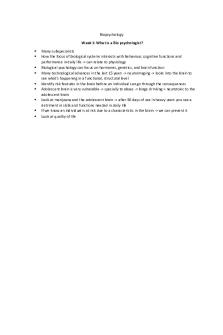
What is a Biopsychologist
- 1 Pages
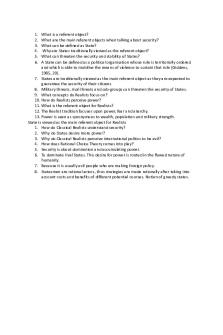
What is a referent object
- 1 Pages

What is a social fact
- 2 Pages
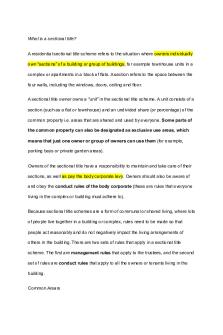
What is a sectional title
- 4 Pages

What is a summary judgement
- 5 Pages

What is a product - lecture
- 4 Pages
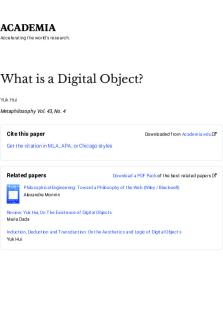
What is a Digital Object?
- 17 Pages

What is a ketogenic diet
- 2 Pages
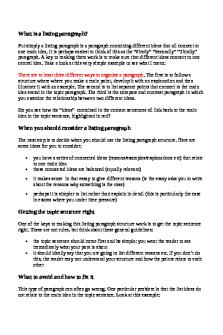
What is a listing paragraph
- 14 Pages

What is a Breadth Indicator
- 4 Pages
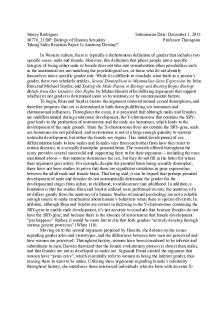
Is Anatomy Destiny - Grade: A
- 2 Pages
Popular Institutions
- Tinajero National High School - Annex
- Politeknik Caltex Riau
- Yokohama City University
- SGT University
- University of Al-Qadisiyah
- Divine Word College of Vigan
- Techniek College Rotterdam
- Universidade de Santiago
- Universiti Teknologi MARA Cawangan Johor Kampus Pasir Gudang
- Poltekkes Kemenkes Yogyakarta
- Baguio City National High School
- Colegio san marcos
- preparatoria uno
- Centro de Bachillerato Tecnológico Industrial y de Servicios No. 107
- Dalian Maritime University
- Quang Trung Secondary School
- Colegio Tecnológico en Informática
- Corporación Regional de Educación Superior
- Grupo CEDVA
- Dar Al Uloom University
- Centro de Estudios Preuniversitarios de la Universidad Nacional de Ingeniería
- 上智大学
- Aakash International School, Nuna Majara
- San Felipe Neri Catholic School
- Kang Chiao International School - New Taipei City
- Misamis Occidental National High School
- Institución Educativa Escuela Normal Juan Ladrilleros
- Kolehiyo ng Pantukan
- Batanes State College
- Instituto Continental
- Sekolah Menengah Kejuruan Kesehatan Kaltara (Tarakan)
- Colegio de La Inmaculada Concepcion - Cebu

